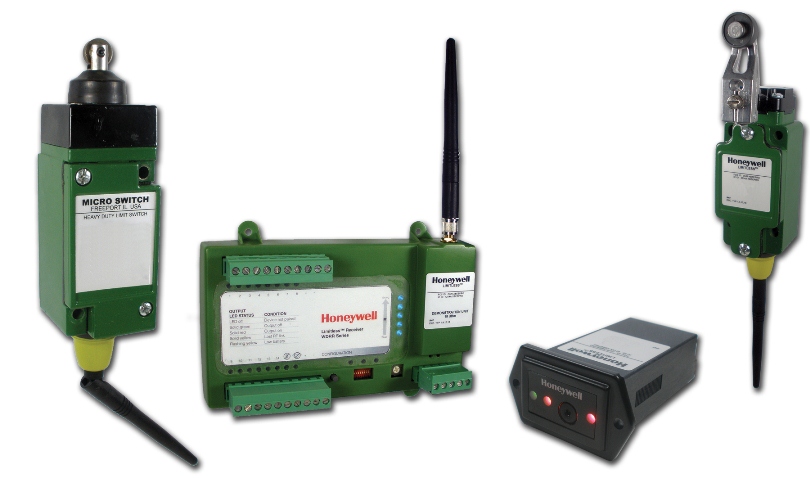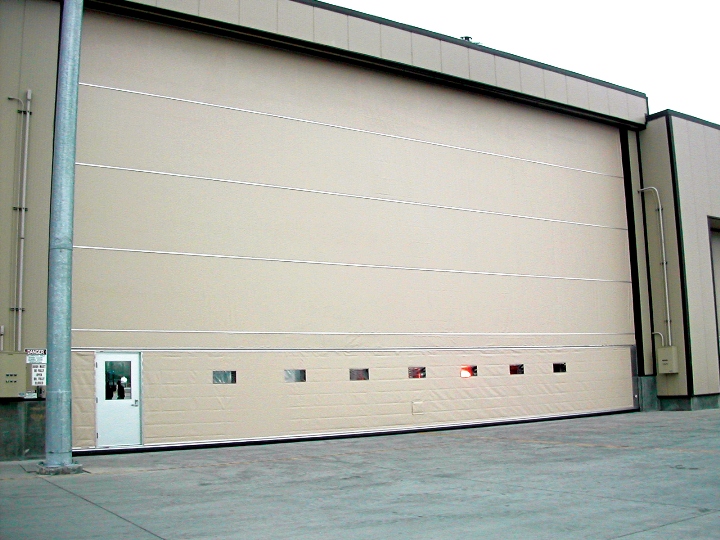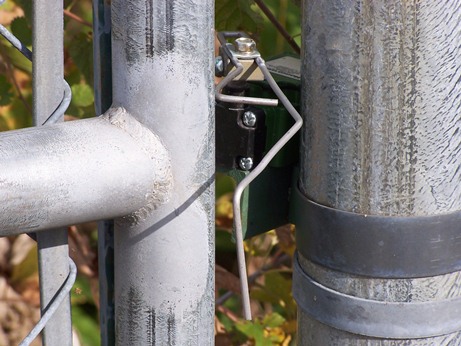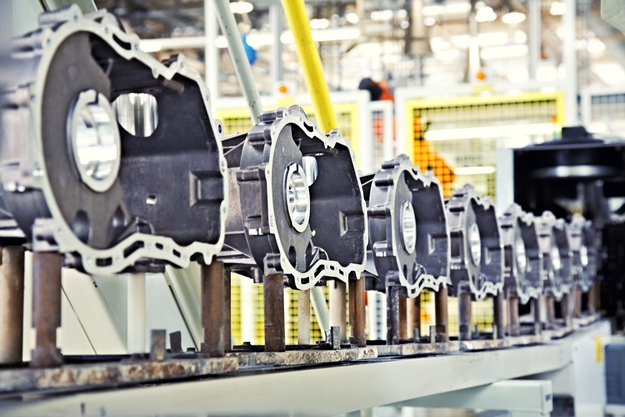|
June 2012
Article
AutomatedBuildings.com
|
[an error occurred while processing this directive]
(Click
Message to Learn More)
|
What
do you need to know about industrial wireless networks?
The improved ROI of wireless – for repair and
maintenance and lower overall operating costs, as well as its
flexibility of installation and reconfiguration are the principal
drivers.
|
|
Industrial
wireless switch and sensor networks are becoming more popular in a
wide range of warehouses, factories and campuses.
Over
the last several years, developers and facility managers have
become more educated about the technology and its characteristics, and
have become very comfortable implementing wireless solutions.
Yes, we
still occasionally get the question, “is wireless secure and
can it really function in an industrial setting?”, but most questions
are now about how it will work in their own environments and how to
effectively replace wires and cables with wireless.
A
primary motivating factor behind the shift is the value, the
ROI that wireless can bring to factories, warehouses and industrial
plants.

Fig 1 - CAPTION: The Honeywell Limitless™ network
consists of
wireless limit switches which monitor position and a Limitless WDRR
Receiver that can talk to up to 14 different switches at a time.
To
ensure reliability of the wireless switch network, each switch
provides a way to ensure that the signal is actually getting through to
the monitoring receiver. In extremely RF noisy environments or those
with lots of moving equipment, the switches can be programmed to
re-transmit the signal until it gets through. The wireless receiver
monitors the quality of the signals to ensure that it is reliably
receiving the signals from each switch node. In addition, in the case
of battery powered switches, each switch provides a power monitoring
function that provides an alarm when the batteries begin to get low.
Automotive
factory managers and assembly line designers have found that
the cost of going wireless is much less than the long term,
accelerating expenses of maintaining, reconfiguring and repairing
cables.
Wireless Control for Doors and Vents
A good
example of how wireless is used is to control and monitor open
doors and vents that waste heat and air conditioning, or that are
security access points.
One such interesting application is the use of the Honeywell Limitless™
industrial wireless network to monitor the status of hangar doors at
airports.

Figure 2 . CAPTION: An aircraft hangar
door with a personal cutout door at the lower left
If you have visited an airport or military facility, you will note that
large aircraft hangar doors often have small cutout doors (Figure 2)
that can be opened for access instead of raising the entire large
hanger door.
Opening the main door while the smaller door is unsecured can cause
thousands of dollars in hangar and/or aircraft damage. Because the
personal door is encased in the folding main door, getting
communication cabling and power to the personal door is a significant
engineering challenge. As these doors both move, traditional wiring
would be subject to flexing and straining, which can result in
communication failures.
The wireless network can provide information regarding the open/closed
status of the access door itself, as well as the device diagnostics. Is
the door switch functioning and transmitting? How reliable is the
signal? If the switches and battery are battery-powered, what are the
battery levels? If there is a problem, the Limitless™ wireless system
is easy to troubleshoot compared to a wired solution which can require
tearing up hundreds of feet of tarmac to find the break in the cabling.
Not only is that expensive, but the possible downtime as the runway or
traffic lane has to be closed off, further increases the overall cost.
Wireless for Industrial Yards and Transportation
An industrial plant in Illinois depends on rail track deliveries to
keep production lines moving.
For years, a hard-wired limit switch on a rail gate was responsible for
activating appropriate indicators that notified employees of a train’s
arrival. However, when the aged wired system finally failed, it was
determined that the underground conduit had disintegrated, disabling
the electrical connection to the switch. A replacement switch was
needed quickly to resume the facility’s required safety procedures.
Initial research indicated that replacement costs for a similar
hard-wired solution would require extensive trenching to replace old
wiring, as well as contractor time and fees. The total cost could
potentially reach $10K, up to 6 weeks of installation time, and
significant site disruption.
Alternatively, a wireless-enabled limit switch and monitor was found
that could be used for position sensing and presence/absence detection.

Fig 3. CAPTION: The Honeywell Limitless
switch is mounted on the gate
and an antenna cable is mounted on the plant’s railroad crossing sign.
As a train enters the gate, the switch communicates with a monitor
mounted inside the manufacturing facility, through another antenna
mounted outside the building. The monitor then activates a computer
control system which automatically activates the facility’s safety
sound and light indicators, notifying employees of a train’s presence.
The
entire wireless system was up and running in just over 6 hours, and
cost less than $1000.
There
was no wiring, conduits, clips or connectors to purchase or
install. There was no wire routing problems to solve, virtually
eliminating location and placement restrictions of the limit switch.
Going wireless has reduced maintenance costs as well. Troubleshooting
is simplified and system reliability is increased due to the
elimination of challenges that arise from switch wiring and connectors.
The switch is simpler to replace as there is no disconnecting or
re-attaching of wiring. In addition, battery costs are minimal as
batteries last up to three years due to low power draw.
One of
the industries with the highest adoption of wireless is
occurring in large manufacturing environments such as the automotive
factory floor because they operate in large buildings and are prone to
frequent reconfiguration. A major challenge in an automotive
factory, as well as in almost any industrial or manufacturing facility,
is the exposure to constantly moving and twisting components that
shorten the lifetime of cabling, as well as long wire runs. Combined
with the hazardous chemicals often found on an assembly line, cables do
not survive long and they need to be troubleshot and repaired.
Troubleshooting and replacing broken cables or connectors in a busy and
dirty factory environment is not fast or inexpensive.
Fig 4 - CAPTION: Automobile manufacturers
throughout the world are
rapidly adopting industrial wireless networks to cost-effectively
monitor and control automated assembly lines.
[an error occurred while processing this directive]Another powerful motivation is the innate
flexibility of wireless. As
assembly lines are often reconfigured as new automobile product lines
are introduced, not re-running data cables is yet another great ROI
advantage. Using a wireless network enables quick reconfiguration of
the switches and controllers as well.
Is the
new location of the control hub optimal for the new assembly
line plan? If not, just move it. Attach it where it works best, plug it
in to power, and once again you can monitor the wireless switch
network. If it’s still not right, just unplug it, move it and power it
back up.
The reduction of downtime associated with troubleshooting and repairing
an industrial wired network often more than covers the total cost of
installing a wireless network. Every minute of downtime in a busy
automotive factory can cost tens of thousands of dollars.
Troubleshooting
a wireless network is much easier and quicker than
tracking down a shorted or defective cable connection. Imagine trying
to locate and then repair the bad spot in a cable as it twists and
winds around complex machinery coated with heavy layers of paint,
grease and grime. Many plants simply give up on maintaining their
data wires, choosing instead to get rid of the old cables and make the
move to wireless. In these harsh environments, wireless
switches in sealed, protective housings can successfully function far
longer than cabling.
The
improved ROI of wireless – for repair and maintenance and lower
overall operating costs, as well as its flexibility of installation and
reconfiguration – are the principal drivers we see for the
increasing rapid acceptance of wireless into a diverse spectrum of
industrial and manufacturing environments.
More
about Honeywell’s Limitless product line including spec sheets and
videos can be found at
http://sensing.honeywell.com/index.php/ci_id/56634/la_id/1.htm
About the Author
Joseph
Citrano III is a Global Product Manager for Honeywell Sensing
and Control (S&C). In this role, Joseph is responsible for
S&C’s wireless switch and sensor product line, driving integrated
product and technology roadmaps, program vision and leading new product
introduction efforts. He develops global execution and go to market
plans, identifying potential technologies and strategic direction.
Joseph has 15 years experience in product marketing, with extensive
experience in the oil and gas, automation systems and sensing and
control industries. Joseph holds a bachelors of science degree in
chemical engineering from Rutgers University. More info about Honeywell
sensing and control can be found here www.honeywell.com/limitless
footer
[an error occurred while processing this directive]
[Click Banner To Learn More]
[Home Page] [The
Automator] [About] [Subscribe
] [Contact
Us]



